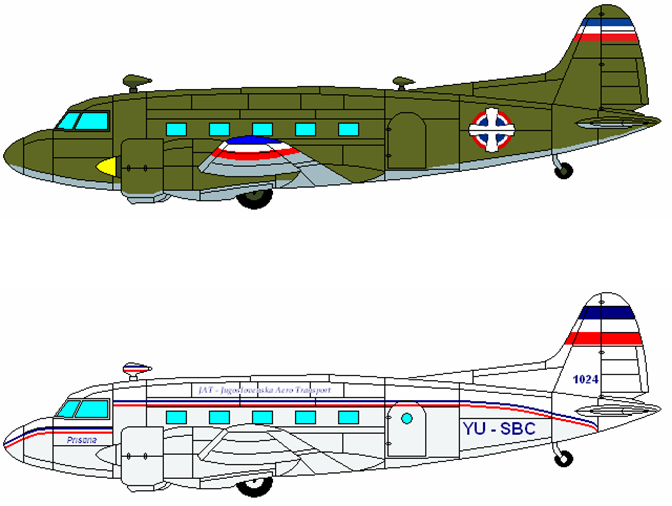Technical Description
Low-wing cantilever monoplane. Wing in three sections, comprising centre-section and two tapering outer sections set at six degrees dihedral. All metal twin-spar structure. Hydraulically-operated flaps inboard of ailerons, the latter being interconnected with the flaps and arranged to drop to augment flap area for landing.
Fuselage is an all-metal semi-monocoque structure.
Cantilever monoplane type tail unit. All-metal tailplane and fin, metal framed fabric-covered rudder and elevators.
Fixed tail-wheel type undercarriage. Hydraulic operation with main wheels retracting into the engine nacelles. Oleo shock absorbers and hydraulic brakes.
Two Racovica-built 600 hp Pratt and Whitney R-1340-AN1 radial air cooled engines. Three-bladed constant speed hydromatic airscrews. Fuel tanks have a maximum capacity of 1,650 litres. Maximum oil capacity 120 litres.
Accommodation for a crew of two and up to ten passengers. The basic aircraft can be configured as a light transport seating ten, as a navigation, wireless, multi-engine and blind-flying training aircraft, or as a bombing and photographic training aircraft. Equipment for military roles includes an oxygen system, wireless, interphone system, etc.
Span 18.40 metres; length 13.80 metres; height 3.95 metres. Wing area 41.80 metres.
Empty weight 3,600 kg. Weight loaded 5,500 kg. Wing loading 131 kg per square metre. Power loading 5.5 kg per horsepower.
Maximum speed 340 kph. Landing speed 120 kph. Service ceiling 5,900 metres. Range 1,000 kilometres. Duration – four hours.
Mention of this design has been made previously under the designation
Project 223
It is expected that a prototype may fly in the spring of 1941, and if tests are successful, construction of an initial series of twenty-five aircraft may begin as early as November 1941.

